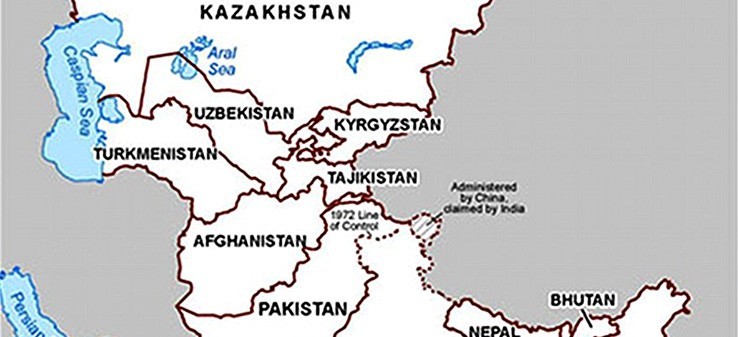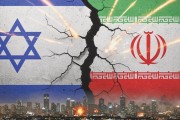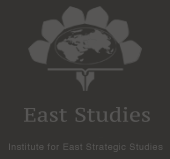Publish Date
Monday 19 May 2025 - 11:33
recommended
0
The Kashmir Crisis
The Kashmir Crisis: The Impact of South Asian Developments on Central Asia’s Security Dynamics
Central Asia remains in a state of constant concern over security developments in South Asia. This persistent anxiety and perception of threat could, in the medium term, undermine the viability of geo-economic projects centered in the region. This, in itself, may strengthen Iran’s position in Central Asia’s southern transit strategies.
By: Omid Rahimi
7 Minutes Reading
Introduction
Since 2021, following the withdrawal of international coalition forces from Afghanistan and the Taliban's return to power, along with the outbreak of war in Ukraine, Central Asia has entered a transitional phase. The region's security dynamics have been evolving ever since and appear to have yet to reach a stable equilibrium. Due to its geographic location at the crossroads of great power rivalries and international challenges, Central Asia is highly reactive to surrounding security developments. Consequently, severe security tensions in neighboring regions like South Asia can influence the region’s internal dynamics. This report explores the impact of recent security tensions in Kashmir on Central Asia’s security environment.
Security Developments in South Asia
The most recent and significant security event in South Asia has been the military and security tensions between Pakistan and India over the Kashmir region. On April 22, a terrorist attack in Indian-administered Kashmir resulted in the death of 26 individuals. India accused Pakistan of supporting terrorism, while Pakistani sources claimed the attack was a pre-planned conspiracy. This led to a series of retaliatory measures by India, such as border closures, diplomatic downgrades, and cancellation of certain bilateral agreements. Pakistan responded with similar actions. These tensions escalated into artillery exchanges and sporadic gunfire, reportedly leaving over 20 people dead.
Although it is expected that, due to the nuclear deterrence and past conflict experiences between the two countries, the tensions will subside soon, the security repercussions are likely to persist and could significantly affect Central Asia.
Another notable trend in South Asian developments is the recent tension between Pakistan and the Taliban. These tensions have been fueled by the Tehrik-e-Taliban Pakistan (TTP) and the support of Afghanistan’s Taliban for separatist movements in Khyber Pakhtunkhwa. This, combined with restrictions on Islamabad's traditional influence in Afghanistan, has exacerbated the situation. This has even led to the Pakistani army launching airstrikes on parts of Afghanistan since December 2024, targeting areas such as Paktia. Although these events fall within the political and security dynamics of South Asia, they may directly impact Central Asia's security landscape.
Implications for Central Asia’s Security Environment
The security developments involving Pakistan and Afghanistan, and particularly the Kashmir crisis, could yield several implications for Central Asia at various levels.
The most serious and imminent threat is the potential emergence of a destabilized zone in Kashmir that could become a hub for terrorist activity. While Taliban-ruled Afghanistan is undergoing a gradual transition toward stability, developments in Kashmir could undermine this process. Should geopolitical and security tensions morph into a religious conflict between Muslims and Hindus, and should certain terrorist groups reemerge, Central Asia would be directly affected. Previously, there were scenarios involving the transfer of fighters from Syria to Afghanistan, but crises such as Kashmir or Taliban-Pakistan tensions could serve as new catalysts for such movements.
Simultaneously, this could facilitate the recruitment of additional fighters from Central Asia into conflict zones—making it the fifth major theater after Syria, Iraq, Afghanistan, and Ukraine. Rising tensions between Pakistan and the Taliban could weaken the Taliban’s security and defense capabilities, further facilitating this scenario. Additionally, if the tensions intensify, Pakistan may resort to promoting Islamist narratives, potentially influencing Central Asian societies. Groups affiliated with Pakistan, such as Jamaat-ud-Dawa and Islah, which have operated in Central Asia for years, could become instrumental in this regard. While these groups differ in nature and operation from extremist Salafi movements, they may nonetheless affect the broader Islamist discourse in the region.
The United States' new strategy complements this threat by incorporating a strong anti-China stance. While many of these security developments are centered in Pakistan, their strategic repercussions could more severely impact China. The China-Pakistan Economic Corridor (CPEC) is a key strategic chokepoint for China, particularly following sanctions on Russia and potential restrictions at the Strait of Malacca. Instability in this corridor would directly target China's interests.
Some reports indicate that during the recent terrorist attack in Kashmir, J.D. Vance, the U.S. Vice President, was on an official visit to India. Some Pakistani sources alleged that foreign mercenaries were behind the attack, with some even suggesting Mossad’s involvement as a security contractor. This could be part of a broader scenario aiming to destabilize China’s western regions - as a center of instability - by leveraging Central Asia’s geography.
The developments in Kashmir may also influence the dynamics among major global powers. China, Russia, and the United States all have varying, and sometimes conflicting, interests in the Kashmir issue. These differing approaches are likely to intensify competition among the powers, with Central Asia as one of the affected arenas. Additionally, part of the tensions in Kashmir are closely tied to intensified rivalries in Afghanistan, which also affect the interests and standing of Central Asian states. Russia's stance, in particular, is crucial for the Central Asian republics.
Both India and Pakistan are members of the Shanghai Cooperation Organization (SCO), but India enjoys a strategic partnership agreement with Russia, which could give it an upper hand. Russian think tanks and policy forums have recommended diplomatic and political support for India, including recognition of its sovereignty over parts of Kashmir, and promoting Moscow’s mediating role.
Moreover, The ongoing tensions in Kashmir could further impact India–Pakistan competition in Central Asia. In recent years, India has adopted a focused approach toward the region. The first summit of India and Central Asia, in the form of 5+1 mechanism, was held in 2019, followed by increased interactions, including a leaders’ summit in 2022. In December 2022, the National Security Advisors of these countries held a joint meeting, and earlier that year, in February, the India-Central Asia Business Council (ICABC) was established. In March 2023, the first working group meeting on Afghanistan between India and Central Asia was held.
India also has experience with military deployments and joint exercises in the region. It has shifted its strategy from “Connecting with Central Asia” to “Acting in Central Asia,” reducing its dependency on Pakistan. Conversely, Pakistan’s unique geographic position provides Central Asia with access to the Indian Ocean. Initiatives like the Trans-Afghan corridor and major projects such as TAPI and CASA-1000 rely heavily on Pakistan’s role and location. Current security tensions may deeply affect these projects and cloud their future prospects.
Other significant topics have also emerged in regional media and expert discourse. As nuclear-armed states, any tension between India and Pakistan has clear implications for Central Asia periphery area. Due to past vulnerabilities stemming from Soviet nuclear activities, Central Asia is particularly sensitive to nuclear developments in its periphery. Countries like Kazakhstan have long promoted nuclear non-proliferation narratives, driven by this perceived threat. Thus, even minor tensions between nuclear powers can raise considerable concern in Central Asia.
Geographically, the proximity of northern Pakistan and Kashmir to Central Asia means the region could be directly affected by conflict fallout. For example, regional media have discussed the potential consequences of any security threat to Pakistan’s Mangla Dam. If it destroyed, flooding could extend into significant areas of Tajikistan and Uzbekistan.
Economically, any disruption in bilateral water agreements between India and Pakistan could generate severe anxiety in Central Asia. Current estimates suggest that shared water resources provide around 40% of the irrigation needed for Pakistan’s wheat and rice production, and any disruption to their flow could trigger serious food security crises for Pakistan and beyond. Central Asian countries which currently produces limited amounts of grain and still relies heavily on imported grain— with the exception of Kazakhstan—would be highly vulnerable to such developments.
Conclusion
Central Asia remains in a state of constant concern over security developments in South Asia. This persistent anxiety and perception of threat could, in the medium term, undermine the viability of geo-economic projects centered in the region. This, in itself, may strengthen Iran’s position in Central Asia’s southern transit strategies.
On the other hand, recent incidents—such as the fire and explosion at Iran’s Shahid Rajaee Port and resulting temporary restrictions—are also affecting Central Asia's transit prospects towards southern ports in the Persian Gulf. In this context, Chabahar's strategic position as an emerging transit corridor presents a significant opportunity for development. If he two key challenges facing Chabahar—namely, security conditions and rail connectivity—be resolved swiftly and sustainably, Central Asia’s investment potential in the port would be significantly enhanced.
At the same time, ongoing security developments may facilitate and accelerate inter-regional security dialogues between Iran and Central Asia, as two peripheral regions of South Asia that are jointly affected by its dynamics. Achieving this goal requires raising the issue in formal bilateral political discourse, and defining multilateral mechanisms.
Omid Rahimi; is a Researcher at the Institute for East Strategic Studies (IESS).
7 Minutes Reading
The Kashmir Crisis: The Impact of South Asian Developments on Central Asia’s Security Dynamics
Introduction
Since 2021, following the withdrawal of international coalition forces from Afghanistan and the Taliban's return to power, along with the outbreak of war in Ukraine, Central Asia has entered a transitional phase. The region's security dynamics have been evolving ever since and appear to have yet to reach a stable equilibrium. Due to its geographic location at the crossroads of great power rivalries and international challenges, Central Asia is highly reactive to surrounding security developments. Consequently, severe security tensions in neighboring regions like South Asia can influence the region’s internal dynamics. This report explores the impact of recent security tensions in Kashmir on Central Asia’s security environment.
Security Developments in South Asia
The most recent and significant security event in South Asia has been the military and security tensions between Pakistan and India over the Kashmir region. On April 22, a terrorist attack in Indian-administered Kashmir resulted in the death of 26 individuals. India accused Pakistan of supporting terrorism, while Pakistani sources claimed the attack was a pre-planned conspiracy. This led to a series of retaliatory measures by India, such as border closures, diplomatic downgrades, and cancellation of certain bilateral agreements. Pakistan responded with similar actions. These tensions escalated into artillery exchanges and sporadic gunfire, reportedly leaving over 20 people dead.
Although it is expected that, due to the nuclear deterrence and past conflict experiences between the two countries, the tensions will subside soon, the security repercussions are likely to persist and could significantly affect Central Asia.
Another notable trend in South Asian developments is the recent tension between Pakistan and the Taliban. These tensions have been fueled by the Tehrik-e-Taliban Pakistan (TTP) and the support of Afghanistan’s Taliban for separatist movements in Khyber Pakhtunkhwa. This, combined with restrictions on Islamabad's traditional influence in Afghanistan, has exacerbated the situation. This has even led to the Pakistani army launching airstrikes on parts of Afghanistan since December 2024, targeting areas such as Paktia. Although these events fall within the political and security dynamics of South Asia, they may directly impact Central Asia's security landscape.
Implications for Central Asia’s Security Environment
The security developments involving Pakistan and Afghanistan, and particularly the Kashmir crisis, could yield several implications for Central Asia at various levels.
The most serious and imminent threat is the potential emergence of a destabilized zone in Kashmir that could become a hub for terrorist activity. While Taliban-ruled Afghanistan is undergoing a gradual transition toward stability, developments in Kashmir could undermine this process. Should geopolitical and security tensions morph into a religious conflict between Muslims and Hindus, and should certain terrorist groups reemerge, Central Asia would be directly affected. Previously, there were scenarios involving the transfer of fighters from Syria to Afghanistan, but crises such as Kashmir or Taliban-Pakistan tensions could serve as new catalysts for such movements.
Simultaneously, this could facilitate the recruitment of additional fighters from Central Asia into conflict zones—making it the fifth major theater after Syria, Iraq, Afghanistan, and Ukraine. Rising tensions between Pakistan and the Taliban could weaken the Taliban’s security and defense capabilities, further facilitating this scenario. Additionally, if the tensions intensify, Pakistan may resort to promoting Islamist narratives, potentially influencing Central Asian societies. Groups affiliated with Pakistan, such as Jamaat-ud-Dawa and Islah, which have operated in Central Asia for years, could become instrumental in this regard. While these groups differ in nature and operation from extremist Salafi movements, they may nonetheless affect the broader Islamist discourse in the region.
The United States' new strategy complements this threat by incorporating a strong anti-China stance. While many of these security developments are centered in Pakistan, their strategic repercussions could more severely impact China. The China-Pakistan Economic Corridor (CPEC) is a key strategic chokepoint for China, particularly following sanctions on Russia and potential restrictions at the Strait of Malacca. Instability in this corridor would directly target China's interests.
Some reports indicate that during the recent terrorist attack in Kashmir, J.D. Vance, the U.S. Vice President, was on an official visit to India. Some Pakistani sources alleged that foreign mercenaries were behind the attack, with some even suggesting Mossad’s involvement as a security contractor. This could be part of a broader scenario aiming to destabilize China’s western regions - as a center of instability - by leveraging Central Asia’s geography.
The developments in Kashmir may also influence the dynamics among major global powers. China, Russia, and the United States all have varying, and sometimes conflicting, interests in the Kashmir issue. These differing approaches are likely to intensify competition among the powers, with Central Asia as one of the affected arenas. Additionally, part of the tensions in Kashmir are closely tied to intensified rivalries in Afghanistan, which also affect the interests and standing of Central Asian states. Russia's stance, in particular, is crucial for the Central Asian republics.
Both India and Pakistan are members of the Shanghai Cooperation Organization (SCO), but India enjoys a strategic partnership agreement with Russia, which could give it an upper hand. Russian think tanks and policy forums have recommended diplomatic and political support for India, including recognition of its sovereignty over parts of Kashmir, and promoting Moscow’s mediating role.
Moreover, The ongoing tensions in Kashmir could further impact India–Pakistan competition in Central Asia. In recent years, India has adopted a focused approach toward the region. The first summit of India and Central Asia, in the form of 5+1 mechanism, was held in 2019, followed by increased interactions, including a leaders’ summit in 2022. In December 2022, the National Security Advisors of these countries held a joint meeting, and earlier that year, in February, the India-Central Asia Business Council (ICABC) was established. In March 2023, the first working group meeting on Afghanistan between India and Central Asia was held.
India also has experience with military deployments and joint exercises in the region. It has shifted its strategy from “Connecting with Central Asia” to “Acting in Central Asia,” reducing its dependency on Pakistan. Conversely, Pakistan’s unique geographic position provides Central Asia with access to the Indian Ocean. Initiatives like the Trans-Afghan corridor and major projects such as TAPI and CASA-1000 rely heavily on Pakistan’s role and location. Current security tensions may deeply affect these projects and cloud their future prospects.
Other significant topics have also emerged in regional media and expert discourse. As nuclear-armed states, any tension between India and Pakistan has clear implications for Central Asia periphery area. Due to past vulnerabilities stemming from Soviet nuclear activities, Central Asia is particularly sensitive to nuclear developments in its periphery. Countries like Kazakhstan have long promoted nuclear non-proliferation narratives, driven by this perceived threat. Thus, even minor tensions between nuclear powers can raise considerable concern in Central Asia.
Geographically, the proximity of northern Pakistan and Kashmir to Central Asia means the region could be directly affected by conflict fallout. For example, regional media have discussed the potential consequences of any security threat to Pakistan’s Mangla Dam. If it destroyed, flooding could extend into significant areas of Tajikistan and Uzbekistan.
Economically, any disruption in bilateral water agreements between India and Pakistan could generate severe anxiety in Central Asia. Current estimates suggest that shared water resources provide around 40% of the irrigation needed for Pakistan’s wheat and rice production, and any disruption to their flow could trigger serious food security crises for Pakistan and beyond. Central Asian countries which currently produces limited amounts of grain and still relies heavily on imported grain— with the exception of Kazakhstan—would be highly vulnerable to such developments.
Conclusion
Central Asia remains in a state of constant concern over security developments in South Asia. This persistent anxiety and perception of threat could, in the medium term, undermine the viability of geo-economic projects centered in the region. This, in itself, may strengthen Iran’s position in Central Asia’s southern transit strategies.
On the other hand, recent incidents—such as the fire and explosion at Iran’s Shahid Rajaee Port and resulting temporary restrictions—are also affecting Central Asia's transit prospects towards southern ports in the Persian Gulf. In this context, Chabahar's strategic position as an emerging transit corridor presents a significant opportunity for development. If he two key challenges facing Chabahar—namely, security conditions and rail connectivity—be resolved swiftly and sustainably, Central Asia’s investment potential in the port would be significantly enhanced.
At the same time, ongoing security developments may facilitate and accelerate inter-regional security dialogues between Iran and Central Asia, as two peripheral regions of South Asia that are jointly affected by its dynamics. Achieving this goal requires raising the issue in formal bilateral political discourse, and defining multilateral mechanisms.
Omid Rahimi; is a Researcher at the Institute for East Strategic Studies (IESS).
News code:4022
Author : Omid Rahimi Researcher at the Institute for East Strategic Studies (IESS)
Source : East Studies















